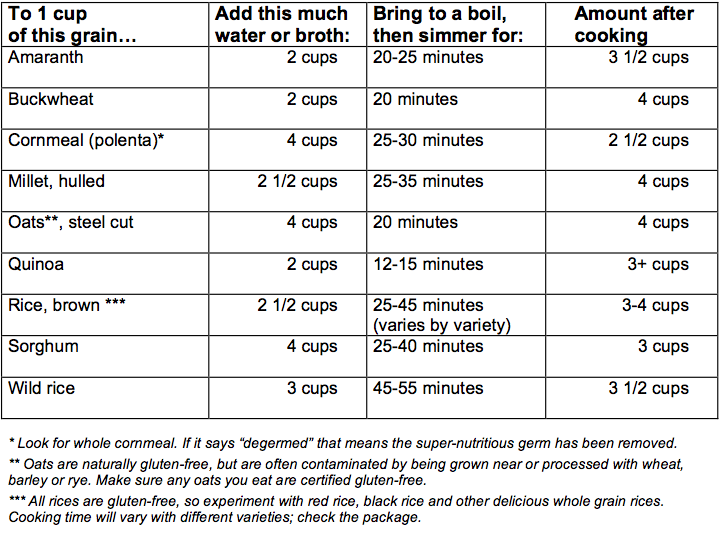Cooking Gluten Free Whole Grains
Gluten-free does not mean grain-free! You can add gluten-free whole grains to your meals without cooking, simply by choosing breads, breakfast cereals, and other prepared gluten-free whole grain foods. If you’d like to enjoy delicious whole grains at home as a side dish, however, here are some guidelines for cooking them from scratch, for more flavor and less expense.
Cooking most grains is very similar to cooking rice. You put the dry grain in a pan with water or broth, bring it to a boil, then simmer until the liquid is absorbed.
To make pilaf, brown small bits of onion, mushroom and garlic in a little oil in a saucepan. Add grain and cook briefly, coating the grains in oil. Then add broth in the amount specified below, and cook until liquid is absorbed.
Grains can vary in cooking time depending on the age of the grain, the variety, and the pans you’re using to cook. When you decide they’re tender and tasty, they’re done! If the grain is not as tender as you like when “time is up,” simply add more water and continue cooking. Or, if everything seems fine before the liquid is all absorbed, simply drain the excess.
If you want to cook grains more quickly, let them sit in the allotted amount of water for a few hours before cooking. Just before dinner, add extra water if necessary, then cook. You’ll find that cooking time is much shorter with a little pre-soaking.
Another shortcut is to cook whole grains in big batches. Grains keep 3-4 days in your fridge and take just minutes to warm up with a little added water or broth. You can also use the leftovers for cold salads (just toss with chopped veggies, dressing, and anything else that suits your fancy), or toss a few handfuls in some soup. Cook once, then take it easy.
If whole grains are sticking to the bottom of the pan, turn off the heat, add a very small amount of liquid, stick a lid on the pan, and let it sit a few minutes. The grain will loosen, easing serving and cleanup.

